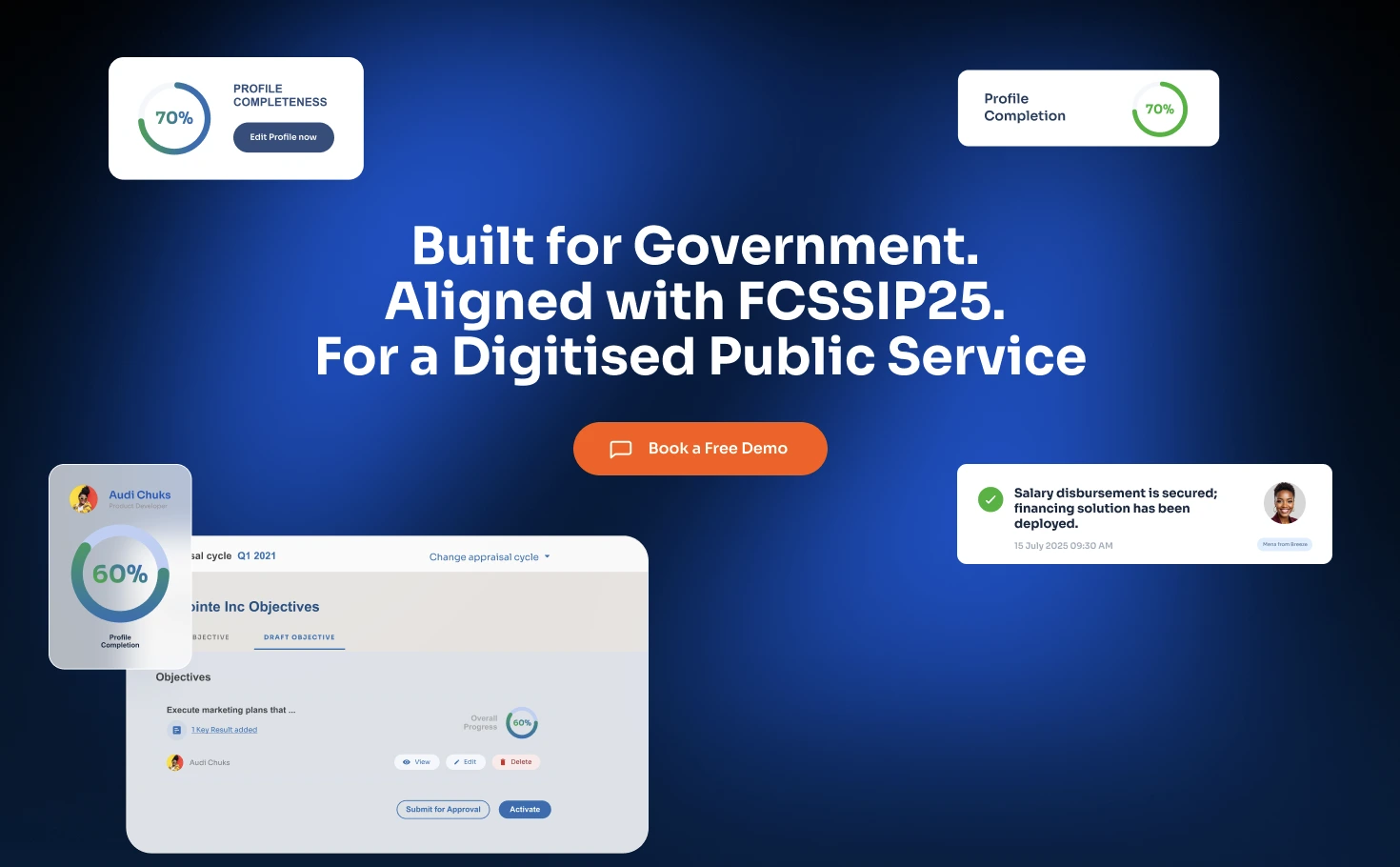HR has moved from the sidelines to the strategy table — and for good reason. A recent Accenture report shows that 89% of CEOs believe HR should play a central role in shaping business strategy, reflecting HR’s growing influence in driving organisational success. When HR strategy aligns with business goals, the results are clear: better performance, stronger employee engagement, and greater agility.
According to the Chartered Institute of Personnel and Development (CIPD), this alignment boosts productivity and business outcomes, while according to Gallup’s “State of the Global Workplace: 2023 Report,” employees who are not engaged or are actively disengaged cost the global economy an estimated $8.8 trillion in lost productivity, equivalent to 9% of global GDP— a cost that strategic HR can help reduce.
In this article, we dissect how leaders can align HR strategy with business goals — from planning to execution.
What is HR Strategy?
HR strategy is the master plan that guides how an organisation attracts, develops, manages, and retains its people — all in service of its broader business objectives. It’s not just a checklist of HR activities; it’s a deliberate approach to aligning people practices with what the business wants to achieve.
Think of it as the blueprint that links workforce management focus to business success. At its core, an effective HR strategy answers one critical question: How can we structure and empower our workforce to move the business forward?
The Relationship Between Business and HR Strategy
The connection between business and HR strategy isn’t one-directional — it’s a two-way street. One can’t thrive without the other. Yet, according to Gartner, only 32% of HR leaders fully integrate their strategic HR with business goals. Without alignment, HR initiatives risk falling short of their potential and businesses are at risk of generating ROI.
Business strategy lays out the what:
- the goals
- the vision
- the competitive edge.
But it’s the HR strategy that delivers the how:
- how people are organised
- how people are empowered
- and how people are enabled to bring that vision to life.
At the same time, a strong HR strategy can also shape business outcomes. For instance, insights from workforce data can reveal productivity gaps, retention risks, or skill shortages, all of which influence what the business should prioritise. In that way, HR doesn’t just support business strategy; it actively informs and refines it.
Here’s how this relationship works in practice:
- Business goals fuel HR direction. If the business wants to scale, HR must plan talent acquisition, onboarding, and development accordingly.
- HR capabilities shape business possibilities. A business can’t execute digital transformation without the right talent, mindset, and culture — all of which fall under HR’s influence.
- Both business and HR grow together. As the business evolves, so should HR’s approach to workforce planning, leadership development, and engagement.
When these two strategies are in sync, HR stops being just an operational function, and becomes a strategic driver of business success. But when they’re misaligned, even the best business plans struggle to take off.
What Is Needed to Execute Your HR Strategy
Having a solid HR strategy is one thing, bringing it to life is where the real work begins. Execution requires more than good intentions and a polished slide deck; it takes clarity, coordination, and commitment.
Here’s what you need to turn your HR strategy into action:
- Leadership buy-in. Senior leaders must understand and champion the strategy. Without their support, HR initiatives often stall or lack impact.
- Clear goals and KPIs. Define what success looks like. Whether it’s improving retention, increasing training uptake, or reducing time-to-hire, measurable targets keep everyone focused.
- Cross-functional collaboration. HR doesn’t work in isolation. Partnering with business units ensures the strategy is grounded in real operational needs.
- Technology and tools. Modern HR tech enables automation, data tracking, and seamless execution across recruitment, performance, payroll, and more.
- Communication and change management. Your people need to understand the why behind every change. Clear, consistent messaging builds trust and encourages adoption.
- Adaptability. Execution isn’t a one-time sprint. Monitor results, gather feedback, and be ready to adjust the strategy as the business evolves.
Strategy without execution is just theory. You need the right structures, people, and tools to make it real.
How to Align HR Strategy with Business Goals
True alignment between HR and business strategy starts with intent, and follows with action. Here’s a step-by-step approach:
- Understand the business inside out. Dive deep into the company’s mission, market, priorities, and pain points. HR leaders must speak the language of the business.
- Identify people priorities that fuel business goals. If the business wants to grow revenue, HR might focus on sales enablement, training, and performance rewards. If it’s about innovation, then culture, collaboration, and skills development become the focus.
- Co-create strategy with leadership. Don’t wait for business plans to be finalised. Be in the room. Offer data and insights to shape direction from the start.
- Build HR initiatives around business outcomes. Tie recruitment, onboarding, learning, and performance management to specific business metrics. HR activities should drive business value — not just tick boxes.
- Track, measure, and adjust. Use HR analytics to show what’s working (and what’s not). Regularly review your strategy to ensure it still aligns with business realities.
When HR strategy is aligned with business goals, the results are powerful: better performance, stronger teams, and a workplace culture that supports real growth.
How to Successfully Plan and Execute Your HR Strategy
A good HR strategy doesn’t start with a spreadsheet — it starts with a vision. But vision alone isn’t enough; planning and execution are where the strategy comes alive. Here’s a simple but powerful approach:
- Start with the business goals. Make sure your HR strategy directly supports what the business is trying to achieve — whether it’s growth, innovation, or efficiency.
- Assess where you are and what you need. Review your current people, processes, and tools. Identify the gaps between where you are and where the business needs you to be.
- Set clear, measurable priorities. Focus on high-impact initiatives and define success with specific metrics — from reducing turnover to improving time-to-hire.
- Create ownership and communicate the “why”. Assign clear responsibilities, timelines, and bring your people along by explaining the bigger picture.
- Track progress and stay flexible. Monitor results regularly, learn from what’s working (or not), and adjust as business needs evolve.
Planning sets the direction; execution makes it real.
How Does Technology Fit Into Your HR Strategy?
Technology is no longer a nice-to-have — it’s the engine that powers modern HR strategy. From planning to execution, HR tech enables you to do more, do it faster, and do it better:
- Data-driven decision-making. HR software gives you access to real-time insights on hiring, engagement, performance, and turnover — helping you make smarter, faster choices.
- Automation of routine tasks. Say goodbye to spreadsheets. With HR tools, you can automate payroll, leave management, appraisals, and more — freeing HR to focus on strategic work.
- Consistency and scalability. As your business grows, HR tech helps you maintain consistent practices across teams and locations without getting overwhelmed.
- Better employee experience. Self-service portals, mobile access, and digital workflows give employees the tools they need and create a smoother, more engaging experience.
- Seamless alignment with goals. The right platform (like SeamlessHR) helps track KPIs, align people initiatives with business metrics, and report on impact — all in one place.
Technology isn’t here to replace HR, it amplifies your impact. With the right HR software like SeamlessHR, you can move beyond admin-heavy tasks and focus on what truly matters: building a stronger workforce, aligning with business goals, and driving strategic outcomes.
From data-driven insights to seamless automation, technology empowers HR teams to work smarter, act faster, and deliver measurable value at every stage of the employee lifecycle.
Ready to experience the SeamlessHR advantage? Book a demo and see how we help you turn strategy into results.






